The average lender, having opened an account and invested in a number of loans, will eventually begin to experience defaults – loans that fail to get repaid. Since peer to peer loans are unsecured, meaning there is no collateral backing the loan (like a house or car), borrowers have the freedom to not pay their loan back if they want, and many choose to do so. Among the strategies we can use to help our lending out, one is selling loans that have gone late on Foliofn, Lending Club’s trading platform.
You do not need to hold these late loans until the bitter end. Dump them on the secondary market!
Defaults are Poison, the Trading Platform the Cure
As a peer to peer lender, your greatest opponent is the defaulting loan. The difference between a Lending Club return that stays high and one that sinks low is what portion of your account are loans that have failed to be repaid. The greatest way we can avoid a large default portion is through diversification. If you own 10 notes and one defaults (which it probably will), that is a 10% loss to your ROI (return on investment) – a very steep hole to climb out of. However, if you own 100 notes and one defaults, it is only a 1% loss. Much more doable.
Most loans do not suddenly and spontaneously default. They happen default gradually over a period of months. The life cycle of a bad note moves in status from Current to Charged-Off like this:
- Current: A happy healthy note, up to date on its payments.
- Failed payment: A healthy note that has suddenly missed a monthly payment. The note’s official may still say Current, but the payment record mentions a newly failed payment. This could mean the borrower simply changed banks. Or it could mean the note is about to go late.
- In Grace-Period: A note that is newly late on its payments (15 days late or less). The majority of these slightly late loans are eventually repaid, but some of them continue forward in the bad-note life cycle.
- Late (16-30 days): A note that is over two weeks late. Once a note hits this stage, it has a fairly decent chance of being lost.
- Late (31+ days): A very late loan that is over a month behind on its payments. Most of these default.
- Default/Charged-Off: A dead note.
How to Sell Late Notes on Lending Club’s Secondary Market
You do not need to be the victim in this scenario. Using Lending Club’s secondary market (called Foliofn), you can offload many of these notes before they default and lower your ROI. How is this possible? Foliofn is full of people looking to purchase notes, even late notes.
Let’s take a moment to remember Lending Club’s loss factors:
As seen in the graphic above, about 20% of our notes that become In Grace-Period are eventually lost to defaults. So any discount less than 20% is salvaged money in your pocket. If you can sell a note for a 10% discount, wonderful. If you can sell a note for a 15% discount, great. If you can only sell a note for a 25% discount, you’ve gone too far.
Why are lenders willing to purchase late In Grace-Period notes for a 10% discount? There are a couple of reasons. First of all, many states do not allow lenders to fund new notes, so purchasing Foliofn notes are the only notes available to them. Big states like Ohio and Texas are in this boat. Secondly, many lenders feel they can beat the system, purchasing late notes that meet a certain criteria. They think these notes will regain their payments, eventually making them a healthy profit.
My Trading Platform Sales for Last Month
In the screen shot below, you can see my sold Foliofn notes for the month of August 2013. Remember, all of these notes (except one: ‘home improvement’) were sold as In Grace-Period. Almost all of these notes were simply discounted around 10%.
As boxed red, a number of these In Grace-Period notes eventually became over 31 days late. At this point they are worth 44% of their remaining principal, and are likely to default (meaning few people will be willing to buy them). Put another way, those four loans demonstrate how we dodge bullets as peer to peer lenders. I kept a combined total of $63.65 that would have likely been lost to the default black hole, possibly more considering other loans in this August sell report were going late as well.
Here’s another screenshot from May. This one is not nearly as glamorous as August, but is still quite good considering a number of these notes would have likely defaulted in the following months.
The point I am trying to emphasize is that you have more power than you realize over your account. Us lenders do not have to suffer from as many defaults as we might assume. Since these loans are legally defined as securities, they can be bought and sold on a secondary market. We need to take advantage of this. We don’t have to be caught holding the bag when our notes finally kick the bucket.
Selling Late Notes at Lending Club: Step-by-Step
Many lenders avoid using Foliofn because of the time it takes. They desire their peer to peer lending to be a more passive experience, and I can’t blame them for that. However, I think many of them write off selling their In Grace-Period notes as being too much work, when it honestly does not take much time at all. Let me show you how I scan for and sell off these notes (usually in 30 seconds):
Step 1 – Log into Your Account. Hopefully by now you’re aware of the basics of Lending Club’s main account screen (if not, head on over to the Beginners Guide series).
Step 2 – Enter your Trading Account. See this link in the screenshot below. If it is your first time, you may need to consent to some legal agreements before proceeding.
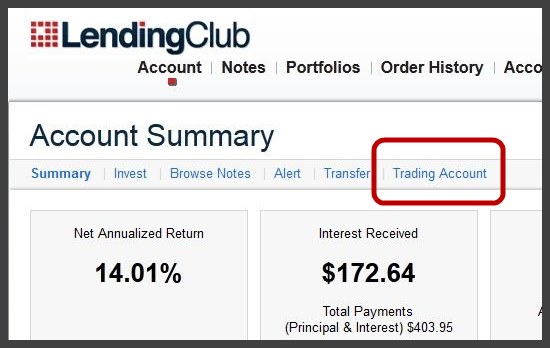
Step 3: Enter the Sell area of Foliofn
Step 4: Arrange by Status to Sell Grace-Period Notes
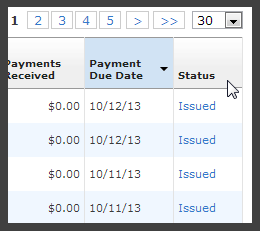 Lending Club’s Foliofn section has a pretty poor interface that makes searching for notes to buy or sell pretty tough. Thankfully, you can find your late notes by simply clicking the Status header twice and then increasing the display count (if your account has more than 15 Issued notes to scroll past).
Lending Club’s Foliofn section has a pretty poor interface that makes searching for notes to buy or sell pretty tough. Thankfully, you can find your late notes by simply clicking the Status header twice and then increasing the display count (if your account has more than 15 Issued notes to scroll past).
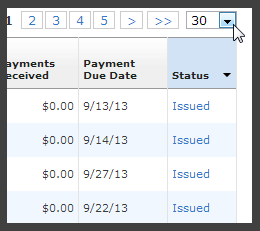
Three clicks, scroll down, and they appear like in the screenshot below. Your screen may look like mine, with just a single Grace-Period note for sale, or it may have multiple late notes. Whatever your situation, check the boxes next to your In Grace-Period notes and click the Sell Notes box at the top of the page to advance to the pricing screen.

Step 5: Calculate Discount and Sell
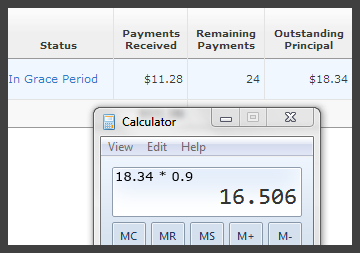
Once you have selected all your Grace-Period notes, you have the ability to price them however you choose. The lower you price them, the easier they sell. I have found a 10% discount a solid starting point, though you may want to experiment with higher or lower discounts than this. I use the calculator included with Windows to discount the note.
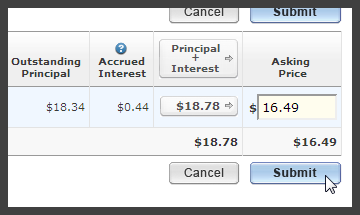
In our example, my late note has $18.34 in principal remaining. In the calculator, I multiply this by 0.9 (a 10% discount) to get the sell price. Though my calculator said $16.50, I’m going to price it at $16.49, because I save a penny in Foliofn fees (they round up from .50), and I like taking whatever advantage I can get.
That’s all there is to it. Your notes are then given seven days on the secondary market before they expire. You can reprice them on the main Foliofn screen at any time, renewing the 7 day expiration date.
Dear Passive Investors: This Process Takes 30 Seconds
Some lenders are hesitant to get involved on the secondary market, because it is a more active approach to peer to peer lending than what they have time for. But this entire process, once it is learned, honestly takes an extra thirty seconds to add to your routine. Thirty seconds, and you might bump up your ROI an extra percentage or two. As someone who is a somewhat-passive investor myself, I have found the process to be quick and painless.
YMMV: The Wild Economy of the Secondary Market
YMMV stands for ‘your mileage may vary’. It’s internet speak for there being different results for different people. Some of us may have a ridiculously easy time on Foliofn, selling Grace-Period notes for a tiny 2-3% discount. Others may have much more difficulty, selling their notes for a huge 15-18%, prompting them to ask whether or not this whole Foliofn thing is even worth the work. I can only recommend you try it for yourself and see what results you get. A 10% discount seems a decent starting place, so start there and experiment away. Once you get a good feel for the secondary market, you’ll find it to be an easy and manageable part of peer to peer lending.
It is worth stating how varied the economy is over at Foliofn. Interesting, as its composed of actual lenders like yourself. Sometimes notes go quickly, other times they linger for the entire week with no buyers, even priced to sell.
4 Strategies to Sell Late Notes
Here are four strategies to sell your late notes on the secondary market:
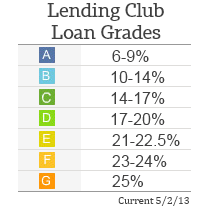 Fund Low-Grade Loans: Foliofn is a bit of a buyers market. There are tens of thousands of available notes for sale, so buyers can choose from notes that are going to give them the best return. This means D, E, F, & G grade notes are particularly in-demand. Fund these notes from the beginning, and you’ll have solid goods to sell later when they go late.
Fund Low-Grade Loans: Foliofn is a bit of a buyers market. There are tens of thousands of available notes for sale, so buyers can choose from notes that are going to give them the best return. This means D, E, F, & G grade notes are particularly in-demand. Fund these notes from the beginning, and you’ll have solid goods to sell later when they go late.- Price Notes to Sell: I know it is difficult to discount your notes so much, but you can bet they’ll be worth a lot less when they are 30+ days on their payments. Price your notes to sell, up to 20%. Be willing to make sacrifices and you will be rewarded in the process.
- Be Aware of Note Size: Aside from its diversification benefits, Foliofn is a great reason to keep your note sizes small. For instance, look at the picture below. Some very hopeful individual somewhere in the United States is trying to sell their $8,000 note on the secondary market. Don’t be like them. Buyers on Foliofn are trying to remain diversified too, and very few people are going to have a portfolio of $8000 notes. Fund your loans with $25-$200 notes, and you’ll have a larger audience for it when it comes time to sell.

- Fund Quality Loans: Not all late notes are created equal; some are higher quality and some are lower. Higher quality notes will have not dipped in their credit score, will not have any late payments in their history, and so on. They simply have missed a payment. Lower quality notes, in contrast, will have experienced a huge drop in their credit score, or may have a repayment record that is full of late payments and fees. If you fund quality notes from the beginning using good filters, you are more likely to have healthier notes later on. For example, loans to fund small businesses have statistically performed poorer in the past than other loans. If you avoid funding small business loans from the beginning, your late notes will possibly be of higher stock later on, and thus will command a smaller discount.
Some Final Thoughts: Prosper and NAR
It is a real shame that Prosper does not allow the sale of notes that have gone late. If you are a Prosper investor like myself, you have to take a less active, more buy-and-hold approach. Hopefully, as Prosper’s volume of borrowers and lenders continues to grow, they will add late loans to their Foliofn section. Till then, many of these strategies are still helpful for Prosper if you are selling Current notes. Lower-grade high-quality notes less than $200 in size are in great demand.
On a final note, there is a drawback to getting more active on the secondary market: the NAR figure (Net Annualized Return) on your main Lending Club account screen is less accurate, though I would argue it was not all that accurate to begin with (see here). You will have to rely on the XIRR function to figure out how you are doing, but in my opinion the increased returns more than make up for this hassle.
Questions or comments? If you enjoyed this please Like or Tweet it below.
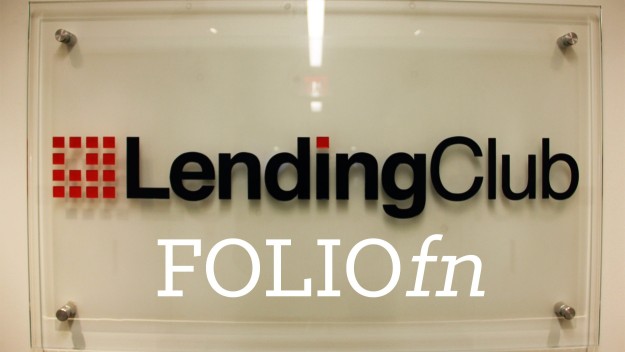
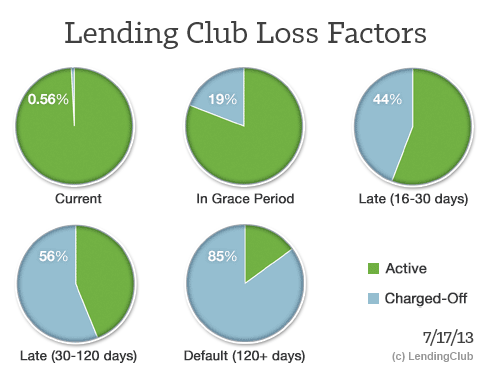
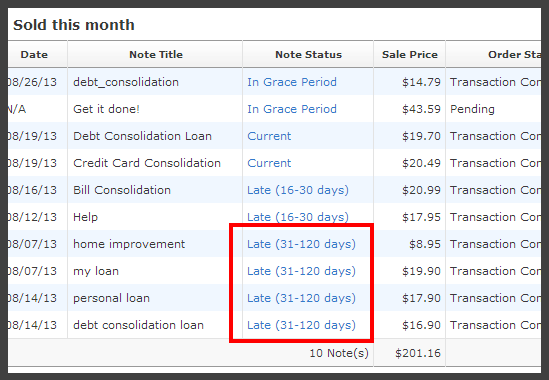
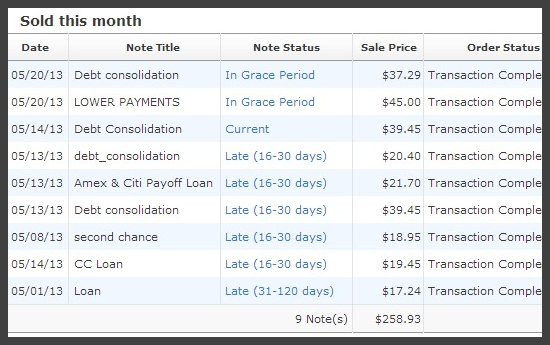
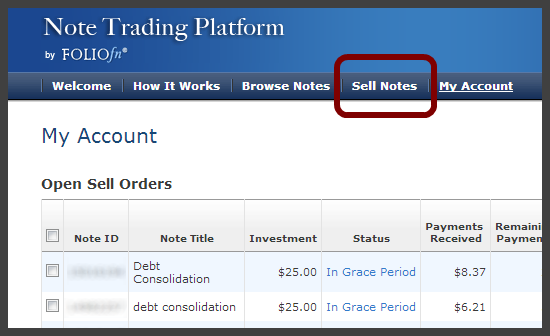
As a side note, when selling late loans that have gone beyond their grace periods, I feel a decent starting point is also 10% above loss factor. So notes 15-30 days late would be discounted 34%, and notes 30-120 days late would be discounted 46%.
In deciding how much to discount ‘Grace Period’ notes, think about taxes. A note sold in less than one year is taxed as a short-term capital gain (a higher rate than the long-term gain after one year).
Thanks Paul. This is just another reason why I prefer investing through an IRA: the ability to sell those notes that go late, even if they are young.
I’m no IRA expert – nor Folio expert but –
Isn’t there an distinction between a Roth or Traditional IRA ?
Wouldn’t a Roth (pre-taxed) allow for liquidity in Folio ?
I thought that these loans were regarded as passive investments and always taxed as regular income regardless of how long they are held.
Unfortunately not, Bill. In fact, all of the interest ends up on your “Interest Income” on the 1040 (taxed at your top rate), but losses end up on Schedule D as Capital Gains/Losses, and are reported by LendingClub as either short term or long term. This applies whether or not you sell them on Folio — i.e. a defaulted or charged off note that you hold till the end will end up on your Schedule D.
I don’t think this is very fair — since any income from the investment will be taxed at your top bracket, but any losses (from long term notes, where they will commonly be) will only give you smaller tax benefit as it eats into the 15% long term gains you may have had with other investments. I get hit by this a ton with LendingClub — if my note investments do well, I pay 25% tax… if they don’t, I get a 15% tax break. Not fair.
There’s a flaw here.
While Lending Club claims that 23% of Grace Period notes default within 9 months, that only applies to notes CURRENTLY in GP. Most of these will initially go back to being Current — and these notes should fare better. How much better isn’t clear. But the set of notes currently in GP includes some which will never be current again and will continue directly to Default, or at least Late status.
Once again, Lending Club’s adjustment is bogus because it makes no change for notes which are Current today but have been late. Without an accurate discount figure to use for this, I don’t think it’s smart to sell off these once-late notes.
Hi Tabby. I wouldn’t call it a flaw as much as a generalization. Anytime we are making broad statements, such as the recovery rates of late loans, we are not going to account for nuance. That said, I hope we can discover loss rates that have a bit more power, such as loss rates on loans that are Current but have a long history of missing payments. Until that day comes, we’ll have to be satisfied with these simpler ones.
Cheers,
Simon
Since I first came across this post in September, I’ve been trying your method, but have had no luck. I wonder if I’m doing something wrong, or if the market for buying discounted late notes is just not there. I’ve routinely priced notes in GP at 15-20%, Late (16-30) at > 40%, and very late (31-120) at >60% discounts. After about 4 months of this strategy (with about 3-6 notes up for sale at any given time), I’ve yet to sell a single one.
Any ideas or suggestions? If I follow your logic, I shouldn’t sell a GP note for more than a 20% discount, and I agree with the math, but I don’t seem to be able to sell any at all at that price.
Thanks!
Hi Jonathan,
The Folio economy shifted exactly around the time I wrote this. I had hoped it would have improved by now, but it sounds like it’s still quite a buyers market. I do hope that people like Michael at NSR help us discover the loss factors by grade, since the default rate for D-grade notes is surely higher than average and a discount of 30% may be worth it for riskier notes.
Perhaps this post is a strategy we can continue to play with until the Folio economy shifts back again. Or perhaps this can encourage us to actually become buyers on it. Either way, I still think this post is a good read considering the principles it contains are wise for investors to internalize, even if they can’t currently employ them in this way.
I may update the post with your comment.
Best,
Simon
Know of any statistical data regarding loans that have been ‘in grace’ or ‘late’ and have been ‘pulled up’ to ‘current’ ?
I peg an ‘in grace’ note at a 10 to 20% discount depending on ‘days out’ – but I’d like to know how to value those that pay up. I’ve had Folio sells cancel because of payment – but what to do with them then ?
Hi Josh. Lending Club’s statistics page has some loss rates based on status.
Hi Simon,
I’m curious how you include / exclude FolioFN activity in your XIRR calculations – do you consider sales as returned principle? When thinking through this on my own it seems like transfers to Folio are already included in deposits, but I’m not sure if I should think of transfers from Folio as returned principle or loan interest when thinking about calculating my XIRR return.
Curious how you do it – thanks,
Ben
Hi Ben,
That’s the beauty of XIRR. Since the only numbers used are account balances, there is no need to calculate a returned principal. You simply go with what your account is worth, and the rate is accurate.
Simon
This is interesting. I’ve been playing around with the secondary market (as a buyer mostly) for a few months now and I was curious to see what other market participants were thinking but this post only underscored how much FolioFN has been changing. Nowadays, if you want to sell your crap, the discounts are substantially greater. A current but not never late will trade for 15-20% discount and a 30-120 late won’t move if not discounted over 90%. With pricing so out of whack with expected value, do you still endorse this strategy?
Hi Zach,
If you find pricing this out of whack, then I would definitely not do it. Perhaps the Folio economy will shift again and make selling late loans a more plausible strategy.
Simon
Unfortunately, selling late notes through the trading platform seems currently near impossible. I have been trying to sell my delinquent notes (in grace period or late) with no luck so far even though I feel I have discounted them greatly. I discount my notes in grace period by 20% and my late notes by 50% (16-30 days late) or 70% (31-120 days late).
Another issue is related to the lag between a note becomes late or enter its grace period and the time it is actually reflected as such in the LendingClub website. It typically takes 5 business days due the time it takes for payments to be posted. Lending Club has taken the approach to be more friendly towards borrowers than investors. I wish Lending Club would be more pro-active in informing investors of failed payments.
Any chance this article can be updated with additional tips to be successful on the trading platform in this buyer’s market?
Thanks.
I have been selling “bad” notes for a while on both Prosper and Lending Club. On Prosper, I immediately sell a Late note that becomes Current. I have sold 8 of these, and in looking at the history of these notes since I sold them, 3 have gone on to other Late stages. The other 5 have stayed current. I particularly like the auction format. I price the newly Current notes at a 40% or even 50% discount. Buyers jump on them and it not unusual for the bidding to take them up to near current value. Seems to be worth the effort. However, I list my Lending Club Grace Period notes immediately, and they usually sell, if I price them at a 20% or 25% discount. But I can’t figure out a way to determine what eventually happened to those notes. Any idea how to do that? Thanks, Simon.
Dick